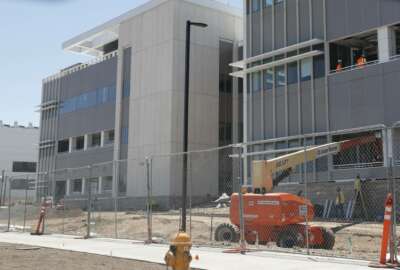

The Department of Veterans Affairs is juggling a multi-billion-dollar maintenance backlog and a growing need to completely recapitalize some of its aging facilities...
The Department of Veterans Affairs has a growing maintenance backlog at its facilities, a problem that’s only gotten worse as the agency struggles to balance everyday upkeep with an ongoing need to completely modernize some facilities for a new era.
The department grades each facility’s core systems and assesses the cost of those deficiencies every three years. According to its own estimates, it would take at least $22 billion to address poor or failing conditions at VA facilities, the department told a House appropriations subcommittee at a hearing on its infrastructure challenges last week.
The same backlog was worth $10 billion 10 years ago.
“I was really struck by some of the words that continually jump off the page, things like ‘correct life safety deficiencies,’ ‘replace seismically deficient buildings,’ ‘replace unsafe conditions,’ just to name a few,” Debbie Wasserman Schultz (D-Fla.), chairman of the House Appropriations Subcommittee on Military Construction and Veterans Affairs, said Friday during a hearing on VA’s infrastructure challenges.
VA’s buildings are, on average, 60 years old, and 69% of the department’s main hospitals are at least 50 years old.
“There are some of those that are in fairly good condition,” Brett Sims, executive director of VA’s Office of Asset Enterprise Management, told the House appropriations subcommittee. “The problem we’re running into now is it’s difficult to maintain that. So even if the maintenance has been done and we’ve made fixes in those buildings, to get to some of the modern health care delivery [needs], those buildings are just not set up to support that. The challenge is more than just the condition. Some of that we can fix, but it goes beyond that through the age of the buildings and not really being able to address some of the new and changing technology that’s necessary to deliver care.”
According to the department’s estimates, VA needs anywhere from $49-to-59 billion to tackle the major and minor construction projects it has identified to date as part of its long-range capital action plan.
“What it doesn’t necessarily address are what’s going to happen next year or the year after,” Sims said. “As these facilities age, there will be additional degradation and additional failures.”
VA owns roughly 157 million square feet of space across 6,300 individual facilities. The department has added more than 1.7 million square feet of owned space to its asset portfolio within the last five years, while it demolished or returned 50 owned-buildings to the General Services Administration, Sims said in his written testimony.
At the same time, VA is entering into more leases. The department had nearly 2,000 leases at the end of 2020, up from the 750 leases it had 10 years ago, Sims said. Leasing allows VA to respond with more flexibility to ever-changing veteran needs in a particular location.
Congress authorized $3.6 billion for VA major and minor construction projects in fiscal 2021 and made investments of a similar size in recent years.
But it hasn’t been enough to make a dent in VA’s maintenance backlog and replace or modernize facilities that are failing to meet 21st century health care needs.
“It can’t be an either or. It has to be both,” Sims said. “We have to look at it in both directions so we’re not needlessly investing in facilities that really do need to be replaced but making sure that we are investing in facilities that need that interim upgrade or interim fix before we would get to a recapitalization.”
These challenges aren’t new, and Congress has spent years discussing the department’s infrastructure problems.
Those challenges most recently inspired the authors of the VA MISSION Act to establish procedures and a commission to review and make recommendations for disposing of the agency’s under-utilized, outdated or vacant facilities — a practice that mirrors the controversial base-realignment and closure process.
The department is currently conducting a market analysis of the veterans population, VA facilities and health care needs in across several regions. Those reviews should be finished before 2022, Sims said.
VA also recently published criteria that will guide the panel, known as the Asset and Infrastructure Review Commission, in making eventual recommendations to the president.
In the meantime, the department is considering what large-scale modernization projects it could potentially include in an infrastructure legislative package, which the Biden administration is developing.
“There’s a lot of reason to look at VA as a core to the national infrastructure need, and we are moving in that direction when it comes to a large-scale infrastructure bill,” Sims said.
And while both Democrats and Republicans showed concern for VA’s growing maintenance backlog and the sheer scope of its asset recapitalization needs, they didn’t come close to a definitive solution.
“This is a long-overdue conversation, both at the macro and more micro level. We spend a lot of time on the direct service to our veterans and really need to make sure that we’re focused on the environment in which we serve them,” Wasserman Schultz said. “I’m more concerned than I have been about our need to focus on the above-the-line and below-the-line decision making.”
Copyright © 2025 Federal News Network. All rights reserved. This website is not intended for users located within the European Economic Area.
Nicole Ogrysko is a reporter for Federal News Network focusing on the federal workforce and federal pay and benefits.
Follow @nogryskoWFED


